Line and Round, I O, was established in Budapest in 2017 by Annabella Hevesi, a Masters graduate from the Moholy-Nagy University of Art and Design and Gábor Bella, a Masters graduate from the "School of Life", with a background in carpentry and numerous years experience in a variety of construction/interior/design fields, including the creation, development and realisation of escape room games, a concept that enjoys a particular popularity in Hungary, and in which context Annabella and Gábor met and began their professional cooperation.
A cooperation that in the six years since it has been staged as Line and Round has seen Annabella and Gábor develop and realise a variety of interior and furniture design projects including, for example, the creation of a locker room and press conference space for the Sopron Basket basketball team, numerous hotel and private interior projects, and the Burnt Geometry collection, Line and Round's first self-initiated furniture collection, and part of that presentation at the 2023 Grassimesse, Leipzig, that saw Line and Round win the inaugural smow-Designpreis, or more accurately co-win the inaugural smow-Designpreis alongside Nürnberg based glassmaker Cornelius Réer.
Following their success in Leipzig we caught up Annabella and Gábor, virtually, online, to chat about their work, approaches and the realities of life as designers in the contemporary Hungary, but began by asking how Line and Round came to be, how Line and Round liberated itself from the escape room game industry.......
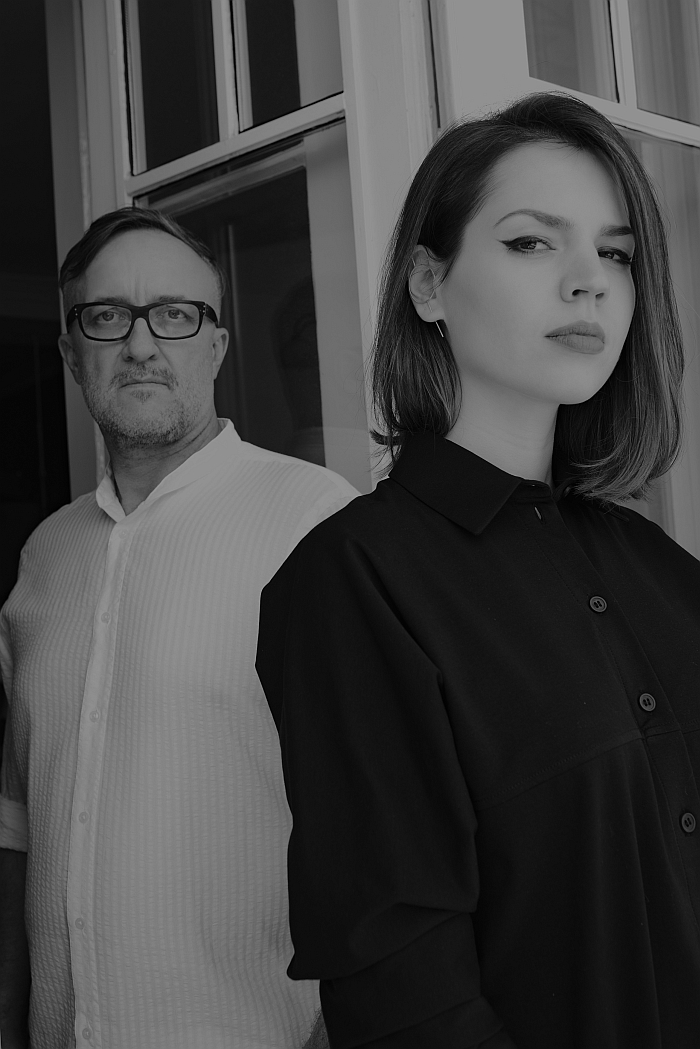
Gábor: Several years ago I developed a project for the Sopron Basket basketball club, but at that time money was tight and so it remained a plan. Then in 2017 they called me, said they had money and asked if could I develop a new plan for them. At that time Annabella and I had already worked together on escape room games and so I asked her work with me on the Sopron project, because although I had much more experience in interior design Annabella is a much better designer than me. And that was then the start.
smow: Which is also one of the interesting things when one looks at Line and Round, your different backgrounds, putting it simply, the academically trained designer and the practically experienced carpenter, is that something that is important for how you work, this idea that as it says on your website 'Opposition is balance'?
Gábor: There are a lot of differences between us but they result in a fruitful cooperation, and already during our time with the escape games we developed a strong working relationship, from the moment we started working together there was a connection and despite the differences between us we both think about things, and approach solutions, in very similar ways, we have similar methods.......
Annabella:.......if, for example, someone asks us for a proposal involving stone we don't start with sketches or develop ideas in stone, but rather we ask ourselves what is stone, what is it for a material, what does it look like, what message is transmitted through the material.
smow: The Sopron Basket's project was not only your first major project, a first major test as Line and Round, but also won several awards, were they helpful in establishing Line and Round, or more important in confirming that the direction you were going in was correct?
Annabella: The awards definitely allowed us to reach a wider audience and also led us to initially position the company as, primarily, an interior design company, and that not just as it allowed for a more secure financial base while establishing ourselves, but also because in Hungary it is much easier to get interior design work than furniture design work.
Gábor: Hungary is not a design market, there aren't enough clients who want to buy Hungarian designed furniture, and the industrial background is poor or missing, and so it is a bit of a mission impossible to try to make a career as a furniture designer in Hungary.
smow: Hold that thought, both of you, we'll come back to it shortly, but that initially means the plan wasn't for a mixed furniture and interior design studio, or.......?
Annabella: It was totally organic process at the beginning, the interior projects also featured bespoke furniture designs, including the lockers and wash-rooms in Sopron, and interior design also was the reason I started to focus on furniture. During my BA studies I didn't design any furniture, my graduation project was a scooter, but when we started the business I was still a Masters student and I had a teacher who was an architect and he made it clear he didn't like the fact that although I wasn't an architect I was doing interior design, and that made me question if I should be. And consequently interior design practice affected my furniture design, and in the final years of my studies I focussed increasingly on the connections between furniture and interior design, increasingly began to consider furniture as a transition between humans and space, and my Masters thesis considered how the space affects the furniture design methodology and what aspects should be considered during furniture design. In design history furniture designers were architects and had an architectural mindset and a product designer has a different mindset which potentially has advantages, also because objects have a very specific connection with people, we have very direct connections with objects, some people have an aversion to art and worry about not understanding the meaning of an art piece, but when you use an object you are directly involved with it, through using it and you never question what was the designer intending, or wanting to say, but you receive a message, you communicate with it through using it.
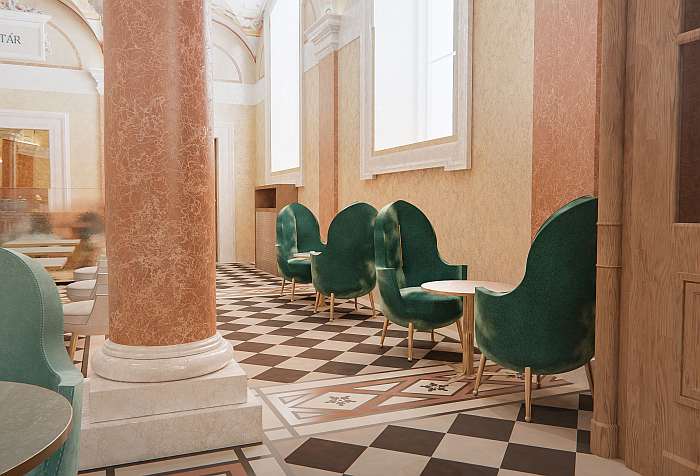
smow: Now we get the "a furniture designer was born" on your website in relation to Sopron. And we may very well come back to such thoughts at a later date. One of your first furniture projects as Line and Round was for the Hungarian State Opera in Budapest, for us that sounds like a project with quite a few limitations, certainly more than in Sopron, was it or was there more freedom than we imagine?
Gábor: The first thing to say is that such a project is like a whale, it's very big with a lot of layers, with the head architect at the top, and then lower down the interior designers, and then even further down the furniture designers, and so from our perspective you cannot see the whole project, plus the Opera project took about 5 years in total and we were only brought in right at the end.......
Annabella:.......we were, literally, given some two and half months to develop 50 or 60 pieces of furniture, and although the requirements were well-defined the project brief was primarily about the architecture, didn't really concern itself with furniture, it was a restoration project, they wanted to rebuild the Opera in its original form.......
Gábor:.......which also meant it was project with a lot of political aspects, it meant a lot of things to a lot of people, and for example the word 'contemporary' was totally impossible, the word 'modern' totally impossible, (laughter) which on the one hand sounds like a very narrow path, but the head architect gave us a free hand to do as we wanted.......
Annabella:.......but it was still a challenge because we didn't want to do 'Neo-rennaissance' furniture, we didn't want to create museum pieces, and also a lot of things have changed over the centuries, not least the clothes people wear to the opera which affects the form of the chair, or appreciations of ergonomics, and so we very much wanted to create something new and contemporary, not that we used that word in communications, clearly, (laughter) but also something that wasn't in conflict with the architectural features, yet without relying on 'Neo-rennaissance' gestures and language. The solution came when I asked, what if we designed chairs inspired by different musical instruments, employing, for example, the symmetry of instruments or the curves, but not too directly? Musical instruments are formally very similar today to those of a hundred years ago or more so there is a relevance for today that was also relevant then, and also allows one a very characteristic visuality, and this kind of narrative approach is I think also very similar to [Miklós] Ybl's use of symbolism in the entire building.
smow: We like that, we get that, also sounds interesting in context of what you said Annabella about connections between objects and users, can't wait to see them, see how that translates in reality.......
Gábor:.......the bad news is you can't, you can't see anything from this project for although the architects and interior designers liked the objects, because of financial issues they've not been realised which is both sad and also reflects our country, because in a normal country where a young designer was given this type of project it would be actively supported by way of helping a young talent to establish themselves.
smow: No Way!! Such a high-pressure project development and then no objects, that's hard, and which we guess is also worth considering in context of your comments Gábor on Hungary as a contemporary design market, but next time we're in Budapest we'll definitely come and have a look at the draughts. But turning to furniture that does exist and that we have seen, or at least partly seen, the Burnt Geometry collection is one we could ask questions about all day, there's a lot of interesting aspects therein, but keeping it brief, it was inspired by a late 1960s, early 1970s enamel art movement in Hungary, is that a movement that is popularly known in Hungary or.......
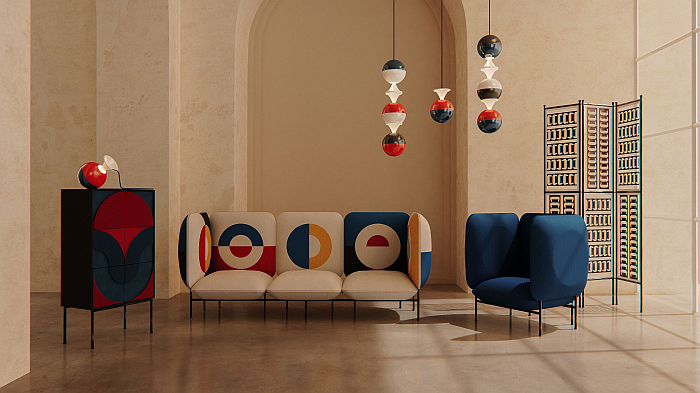
Gábor: Very little, next to nothing, it is really just known amongst a small circle in Budapest who know everything about Hungarian art history.
smow: A circle to which you belonged, is it a moment in Hungarian art history you've long known about...?
Annabella: No, no, and that despite having studied art history at different points in my education. We discovered them when we visited Gallery acb here in Budapest where I saw a book from a previous exhibition, called Burnt Geometry1, about this movement which neither of us had heard about, and I was fascinated by them and wanted to highlight them through contemporary design, but I also wanted to understand their heritage, and what particularly interested me was that they were inspired by Bauhaus and by Victor Vasarely's artworks and both of these legacies are popular in Hungary and in an international context, but yet these enamel artists are unknown.......
Gábor:.......when we first discussed working together one of the first decisions we made was to focus on the international market and so we tried to find something that was understandable to Hungarians but also understandable to those outwith Hungary, and with a project such as Burnt Geometry one achieves that because as Annabella says, everyone knows Bauhaus, everyone knows Moholy-Nagy, Breuer Marcell etc so it was very conscious decision from Annabella.......
Annabella:.......the starting point was however the enamel art and an analysis of Lantos Ferenc's art work, who was one of the leading figures of this movement, and who was also a teacher who together with his wife, Apagyi Mária, a pianist, developed a methodology of teaching that involved a kind of linguistic approach based on the idea of there being a number of basic units which you can combine in different ways to create something new, a process that can be used in art or music or any discipline, and which they experimented with as a teaching method similar to teaching language. And the Burnt Geometry collection is also about this way of thinking, all the components have a modularity, can be joined in various ways to create different expressions. In addition, during his career Lantos Ferenc spent a lot of time studying the circle and the square and their relationships and creating fragments of combinations of circles and squares and developed nature like patterns and compositions.......
Gábor:....... it is not a question of style, it is an ancient problem in art, you have only basic elements, circle, square etc and how can you create new works with these elements? You have to develop new sequences, new forms, new organic forms based on these geometric elements, and that isn't an Hungarian problem or a 1960s problem, it's a basic problem of art which is also why its important in the project that Annabella also returned to the folkloric.......
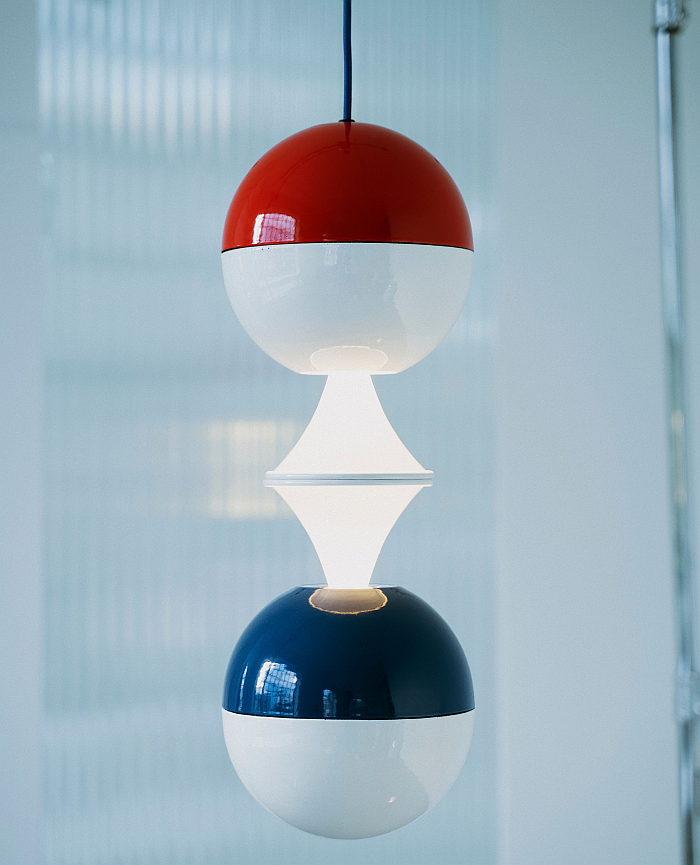
smow:.......which answers a couple question we were heading to, on the one hand if Hungarians maybe have alternative access to the Burnt Geometry works than those outwith Hungary, and also the mixing in Burnt Geometry of folkloric elements with more contemporary art.......
Annabella:.......the plan was to introduce ourselves in Stockholm through the furniture fair's Greenhouse section, and as I was developing the project I was questioning how can we identify the work as ours, and so it became a designer identity question. In Hungary Scandinavian design is very popular, possibly because a lot of Hungarians had the chance to study in Finland in the 1980s, and those who did really liked Finnish design and told us that Scandinavian design is the highest level, and so everyone tried to make Scandinavian design here, but without the industry background or support, which can't really work. And if we had tried to recreate Scandinavian design amongst Scandinavians we would only be a poor imitation, and during that process it occurred to me that we should build on our own Hungarian heritage, build on our own roots, and when I realised that this enamel art movement has important previous references, for example, Lantos Ferenc has a tulip series in his enamel art which is a motif that has roots in Hungarian folklore, and which has a very direct connection to Hungarian art history, and so I started to focus on the connection, and to consider that maybe it can be definition of Hungarian design, if that would exist.
smow: This idea of a continuation throughout the ages, all re-workings of similar components, like that, and a continuation not just in terms of the works, motifs, positions etc, but also continuation in terms of the production, the works were produced at least partly, and also partly inspired by, EMA-Lion in Bonyhád who also produced the original artworks, was it a case of EMA-Lion being the only choice as partner in this project because of their connection to the art, or why EMA-Lion?
Annabella: When we realised that they still existed as they had sixty years ago it was obvious we would like to cooperate with them, as long as they are cooperative. But on the other hand, within the collection I really wanted to employ enamel technology directly, I was relatively familiar with it since attending an enamel art course during primary school and after we did deep research about this surface treatment's potential sustainability index we came to the conclusion that this solution is much better than the very popular plastic-based powder coating. And for me it results in a more fascinating visual character, thus I tried to highlight this imperfect, liquid-look-a-like surface through my lamp design. Having decided for this technology, to be honest, we wouldn't even have had too many options in Hungary, but luckily, the original factory was still there and I consider our cooperation very symbolic and relevant to the concept of continuity.
smow: Certainly, and its something we very much enjoy about the project; however their main business is enamel pots and pans, how did they react when two designers arrived from Budapest and said 'we want to make furniture and lighting'? We're they immediately open to the idea, or did it take time?
Gábor: Although EMA-Lion was a much larger and more important industry player in the past, it is still a bigger player than designers walking in off the street saying we want to work with you. At the same time there is, was, an openness from them, partly because of the enamel art tradition, which they naturally take into account, and partly because, and this is also a frequent experience of ours, the new, surprising departure from the usual can be inspiring for industrial actors; they can partly see a professional challenge, and on the other hand, it adds colour to the 'boring' everyday routine. We are also lucky that such design or artistic orders are dealt with by a separate unit, the sign factory, where they typically make small series or unique things, mainly enamel signs and inscriptions. In any case, there was a specific evolution of our cooperation, they started to take us increasingly seriously over time, and it's also interesting that a manufacturer like EMA-Lion doesn't have to love what they do, as the director put it: 'I like it, I like it, but not in my home...' (laughter) At the same time, we also believe that this relationship evolution also has an educational aspect, perhaps one day these industrial players will see the true values of design and will be present in the chain as initiators not just implementers.
smow: Which I get the feeling might be a point we return to very soon; but coming briefly coming back to what you said Annabella about the question as to whether a definition of Hungarian design exists, there is definitely a long tradition of design in Hungary, not least no Hungarians, no steel tube furniture, but if you say the Hungarian enamel art from the 1960s and 70s isn't well known in Hungary, is Hungarian design from the 1960s, 70s.......?
Gábor: As with everywhere retro is very popular in Hungary today, and, for example, lamps by the likes of Borz Kováts Sándor, so mushroom style lamps, are very popular today, whereby Artemide realised a very similar mushroom lamp at around the same time, if a little after Borz Kováts Sándor.
Annabella: I think in the mainstream Hungarian culture a lot of people avoid the period before 1989, aren't that interested in that period and visual culture and prefer works since 1990, but there are a few people who try to rehabilitate that period of Hungarian design and art, including me. Also because there is a lot of value in the works and lot of important things we need to face, and to realise that it is integral to our culture.
smow: Again that idea continuation, which as you say is important, and which brings us back to Hungary as a design market, or not, and the mission impossible of establishing yourself as a designer, whereby a key question is, and one alluded to already in context of EMA-Lion, if as a designer you can find furniture partners in Hungary? Or as Hungarian furniture designers are you forced to look outwith Hungary?
Annabella: During the development of Burnt Geometry we realised that in Hungary we don't have the development culture in the industry, there are some manufactures but usually they only produce components for foreign companies, and when you develop a new project you need a new approach, you have to take risks, also with money, time etc, so when a designer tries to design something new in Hungary they are faced with this missing development risk culture. And so working with companies outwith Hungary is I think more rewarding because they tend to have this development experience, and it is more valuable to work with people who have more experience than us than someone at the same level.
Gábor: In Hungary today it is a jungle fight! We have to be machetes and try to cut the plants, and in general I'm very pessimistic about the future because without a local market design cannot exist, and to build a local market is not a designer's task, it’s the task of the state or of the industry and although we and a few others keep trying, and there are talented young designers in Hungary who have global contacts which influences their work, Hungarian designers have two possibilities: to leave, to move to a happier land, or to establish cooperations with international manufacturers, but that is a very hard path.
smow: Which obviously brings us to the question of the future, the next steps.
Annabella: One current focus is developing the online marketplace for Self and Scope, a new brand we are establishing, a new brand to sell our own products which we want to separate from the design service work, and the other main focus is trying to find international clients and to enter cooperations with international manufacturers. That's the main aim.
smow: Good luck with all that, and especially with the jungle fight, and for our part we're very much looking forward to where that takes you.
More information on Annabella, Gábor and Line and Round can be found at https://lineandround.io/
And the Self and Scope shop can be found at www.selfandscope.io
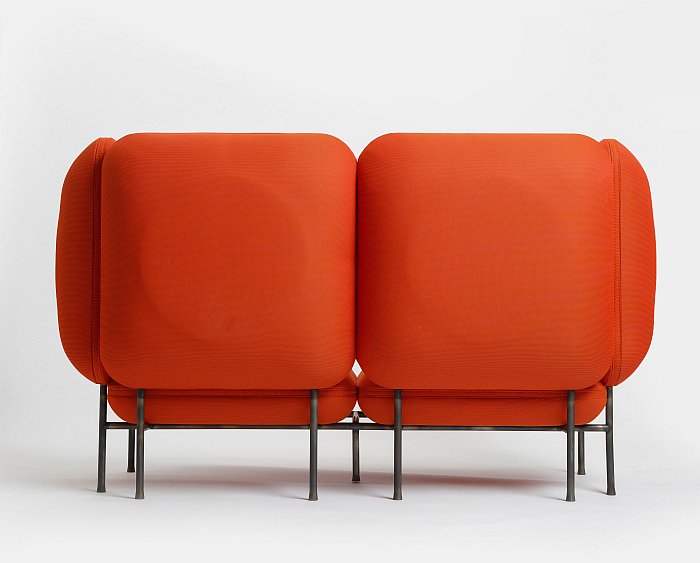
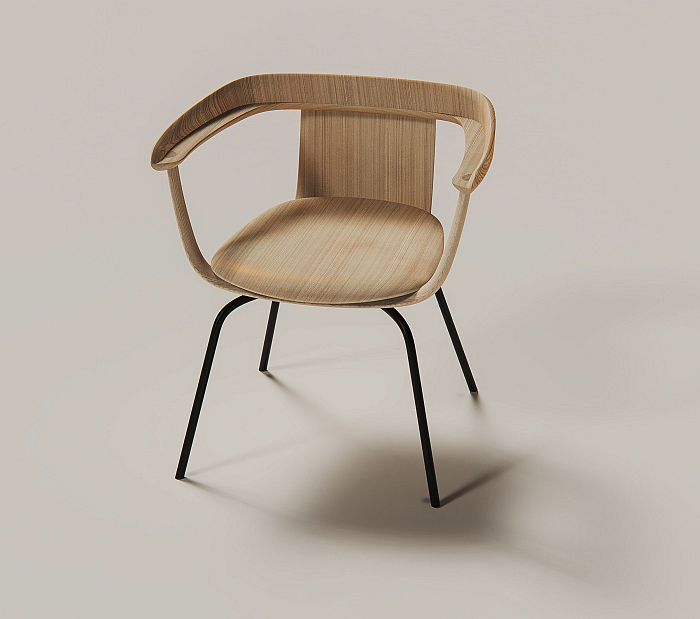
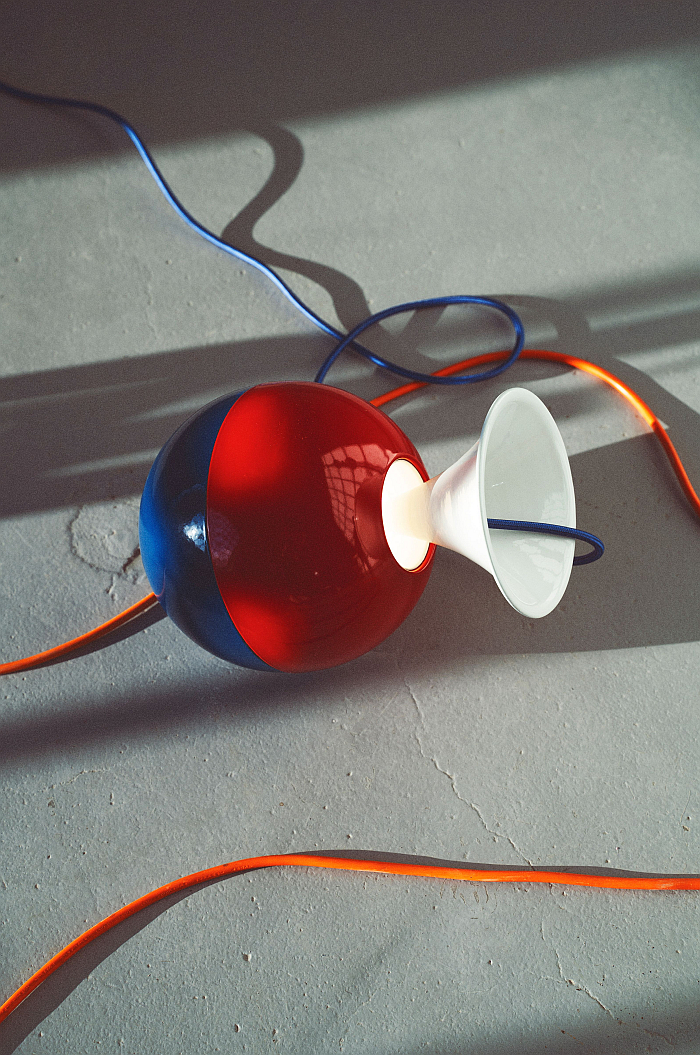
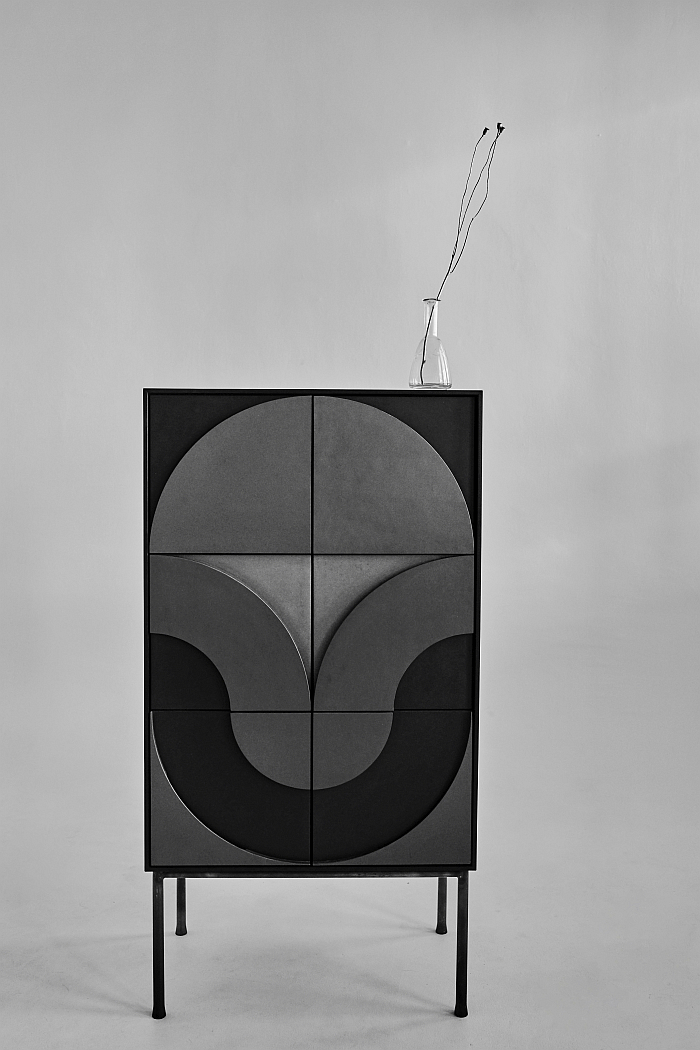
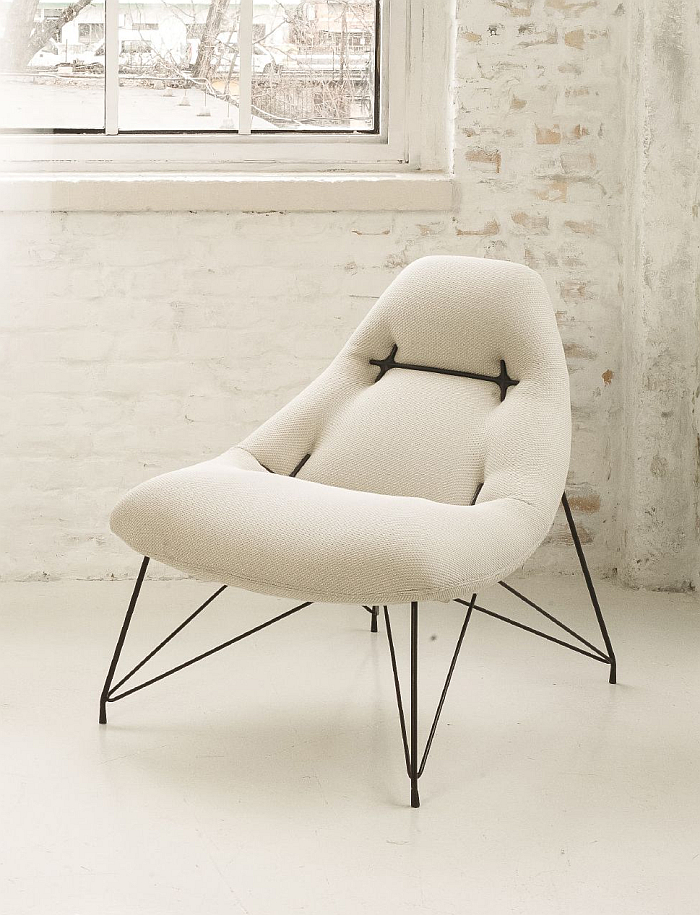
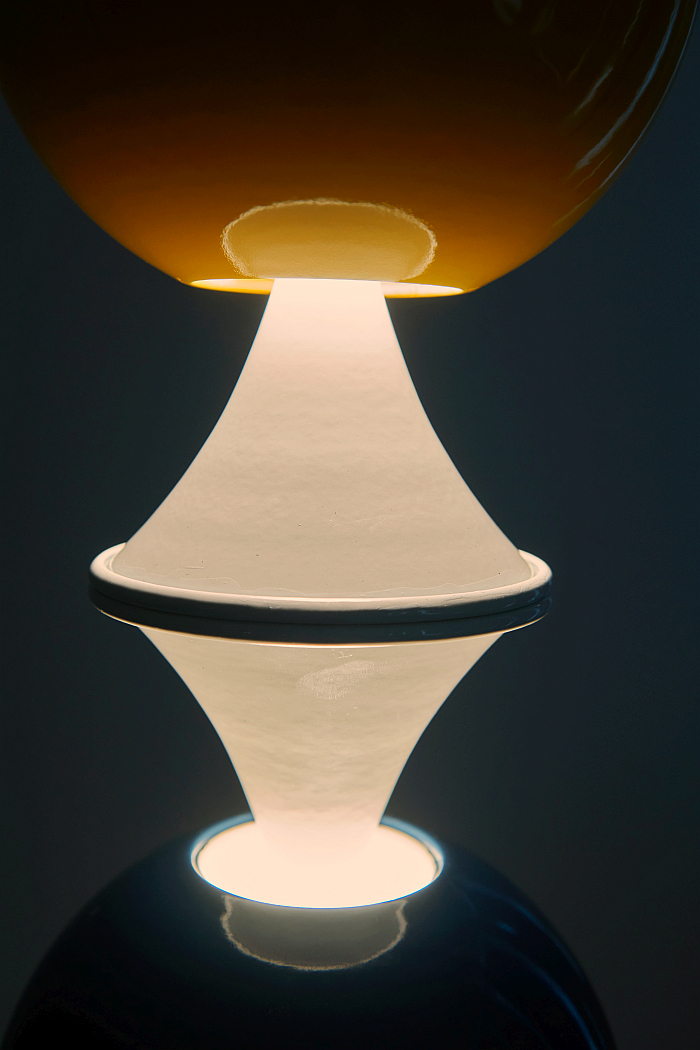
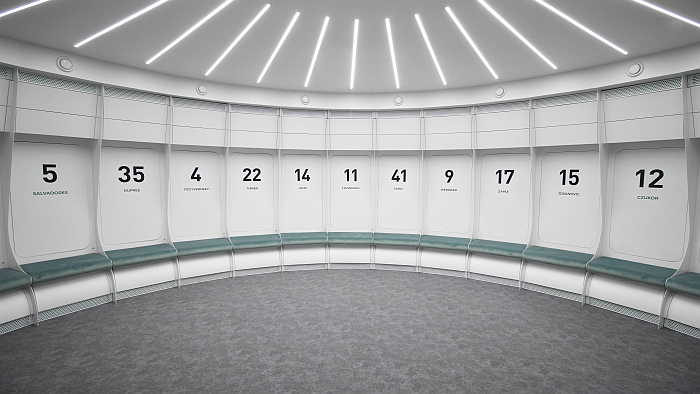
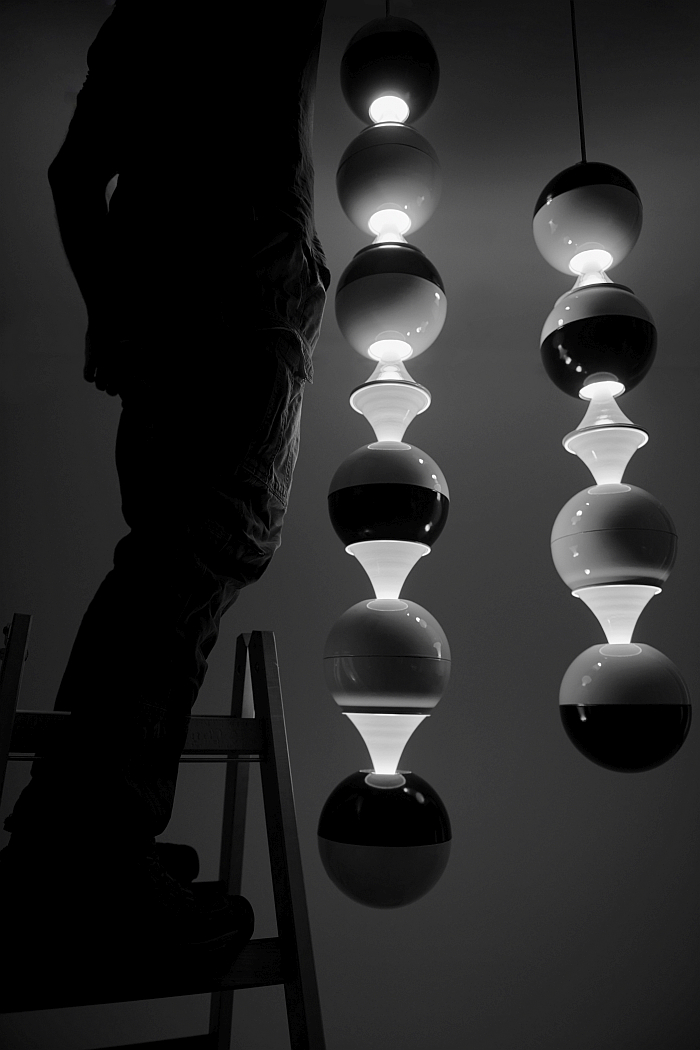
1Égetett geometria. Zománcművészeti kísérletek Bonyhádon (1968–1972) [Burnt geometry. Enamel experiments in Bonyhád (1968-1972)] January 23rd – March 17th 2019 at the Vasarely Museum, Budapest, [a co-production between acb and the Vasarely Museum]